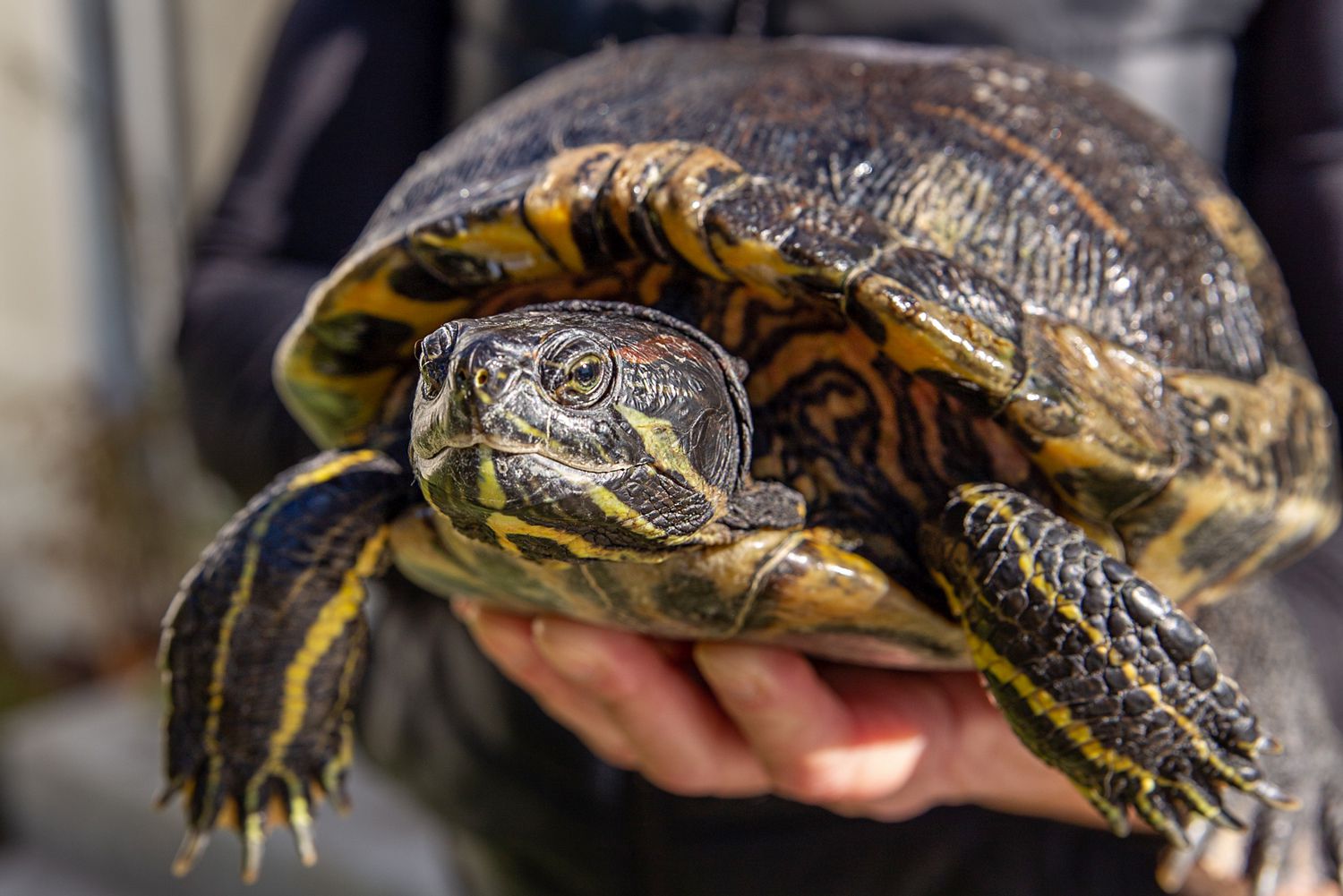zoomacademia.com – Turtles are often seen as symbols of slowness, famously depicted in fables like “The Tortoise and the Hare,” where slow and steady wins the race. But have you ever wondered why turtles are so slow in the first place? What evolutionary and biological factors have contributed to their laid-back pace? Let’s explore the reasons behind the turtle’s leisurely lifestyle.
1. Body Structure: Built for Defense, Not Speed
One of the primary reasons turtles are slow is their unique body structure, particularly their heavy, protective shells. These shells serve as a fortress, safeguarding them from predators, but they come at a cost: mobility. The shell, made up of bony plates called scutes, is heavy and limits the range of motion of their limbs.
Unlike fast-moving animals that rely on agility and speed to evade threats, turtles don’t need to rush away from predators. They can retreat into their shells for safety. This defense mechanism reduces the need for speed as an evolutionary survival trait.
2. Energy Efficiency: Slow but Steady Wins the Evolutionary Race
Another reason for the turtle’s slow speed lies in its metabolism. Turtles have a slow metabolic rate, meaning they don’t need to expend large amounts of energy quickly. Instead of relying on bursts of speed to catch prey or avoid danger, turtles have adapted to conserve energy. This slow metabolic process helps them survive in environments where food may be scarce or unpredictable.
Additionally, some turtle species can hibernate for months at a time, subsisting on stored energy. In the animal kingdom, energy efficiency is a key survival tactic, and for turtles, slowness is a way of life that allows them to thrive in harsh environments.
3. Adaptation to Habitat
Turtles are found in a variety of habitats, from land to water, and their speed often depends on their environment. Aquatic turtles, such as sea turtles, are significantly faster in water than their land-based counterparts. Their streamlined bodies and flippers allow them to swim efficiently, even covering large distances at a relatively good pace.
However, terrestrial turtles and tortoises move slowly on land due to their short legs and the aforementioned weight of their shells. For them, there’s little evolutionary advantage in moving quickly. Slow, steady movement allows them to navigate rugged terrains and survive in environments where speed isn’t a priority.
4. Predator Avoidance Strategies
Unlike prey animals that rely on speed to escape predators, turtles have evolved different survival strategies. Their slowness often prevents them from being noticed. Many predators go after fast, erratic-moving animals, and a slow-moving turtle might not even register as potential prey. When a turtle is threatened, instead of fleeing, it can pull its head and legs into its shell, turning itself into an impenetrable fortress that’s hard for most predators to crack.
5. Evolutionary History
Turtles have been around for over 200 million years, with their lineage stretching back to the time of dinosaurs. Their slow speed has not hindered their survival but rather contributed to their longevity as a species. In evolutionary terms, their ability to endure over millennia is a testament to how effective their slow-paced lifestyle is. Speed might not have been as essential for survival in their ecological niche compared to their other adaptations, such as their shell or efficient metabolism.
Conclusion
Turtles may be slow, but their evolutionary success shows that speed isn’t always necessary to thrive. Their slow pace is an adaptation to their body structure, energy needs, and survival strategies. Turtles are a perfect example of how nature balances efficiency with survival, showing that sometimes, slow and steady really does win the race.







